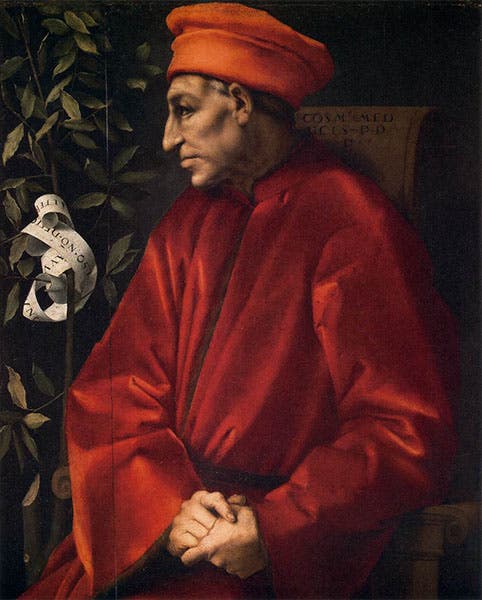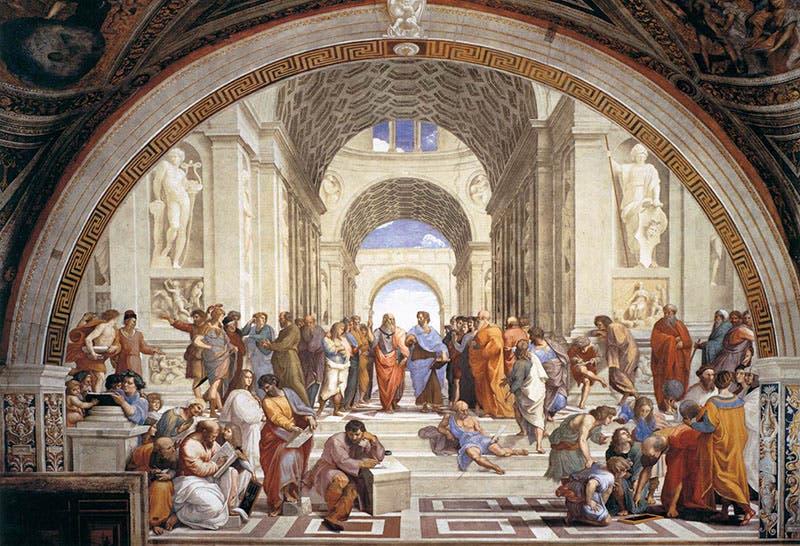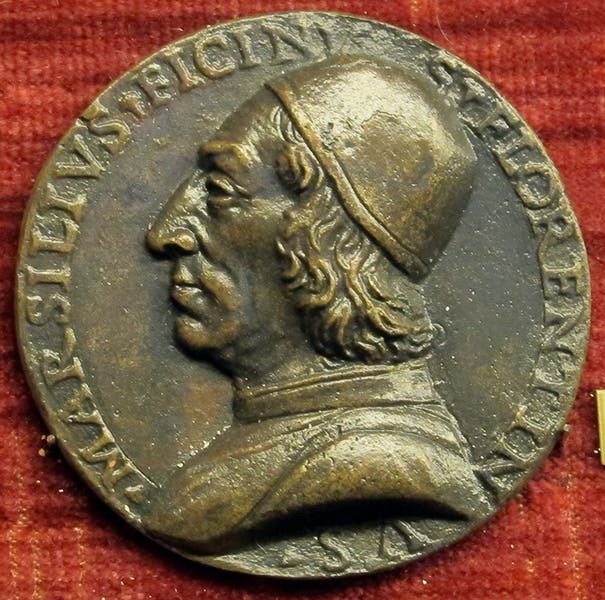Scientist of the Day - Marsilio Ficino
Marsilio Ficino, an Italian humanist, died Oct. 1, 1499, at the age of 65. Ficino was largely responsible for the revival of Plato in the mid-fifteenth century that shaped so much of Renaissance thought and culture. The writings of Aristotle had been available in the West since the 12th century, but Plato was known only through a few of his works that had been translated from Arabic. Ficino's patron was Cosimo “il Vecchio” de' Medici of Florence (third image). In 1438-9, Cosimo sponsored the Council of Florence, which brought together emissaries from the Eastern and Western churches, in an attempt (unsuccessful) to heal the schism between East and West. Several scholars from Constantinople were conversant with the philosophy of Plato, a knowledge they acquired from first-hand study of Greek manuscripts in Constantinople. Cosimo became quite interested in Plato's philosophy, and before long he managed to acquire from Constantinople a Greek manuscript that contained the bulk of Plato's surviving writings. Cosimo asked Ficino to translate Plato's works into Latin, which was a bit presumptuous, since at the time, Ficino did not read Greek. But he too was excited by the prospect of reading Plato in his original language, and so Ficino learned Greek, and by 1460, he had completed a translation of Plato's complete works into Latin.
Meanwhile, Cosimo had founded the Platonic Academy of Florence, a revival of Plato's original Academy in Athens, given them a villa for a meeting place, and placed Ficino in charge. Ficino was the principal formulator of what is sometimes called Renaissance Neoplatonism – we use the “neo” prefix because Ficino, and his principal disciple, Pico della Mirandola, infused the doctrines of Plato with elements from Christianity, Plotinus, the Judaic Cabala, and the mysterious Hermetic writings that had just come to light. It was a Platonism that Plato himself mighty not have recognized.
In 1490, Domenico Ghirlandaio completed a fresco for the Tornabuoni Chapel in Santa Maria Novella, Florence. The painting is called Angel Appearing to Zechariah and depicts the annunciation to the astonished father of John the Baptist that his wife is to bear a son (second image). For reasons unknown to me, Ghirlandaio included a grouping of four prominent Florentine humanists in the left foreground (nearly everyone else in the painting except Zechariah and the angel is a Tornabuoni). You can see the quartet in a detail (first image). Ficino is at far left. The figure facing us, third from left, is Angelo Poliziano, a humanist almost as famous as Ficino, who saved the life of Lorenzo de’ Medici during the Pazzi conspiracy of 1478 and was the tutor to Lorenzo’s children. Poliziano awaits his turn as a Scientist of the day.
It is sobering to think that had Ficino not re-elevated Plato to the highest rank of ancient Greek philosophy, a rank he would now share with Aristotle, then Raphael would have had no reason to put Aristotle and Plato together under the central arch of his fresco painting, School of Athens (1509), in the Vatican apartments (fourth image). And we would have lost one of the great images of Italian Renaissance art. In the detail (fifth image), that is Plato at the left, sporting the features of the best model for a wise old man that Raphael could find, Leonardo da Vinci. For more on this marvelous fresco, see the entry we did on Raphael several years ago.
There are other images of Ficino beside the one in Ghirladaio’s painting. We like the portrait on his medal (sixth image), which is inscribed around the edge: “Marsilio Ficino Florentine”, but we like the other side better, the side nobody photographs. There is no image, just a one-word inscription: Platone.
Dr. William B. Ashworth, Jr., Consultant for the History of Science, Linda Hall Library and Associate Professor emeritus, Department of History, University of Missouri-Kansas City. Comments or corrections are welcome; please direct to ashworthw@umkc.edu.











